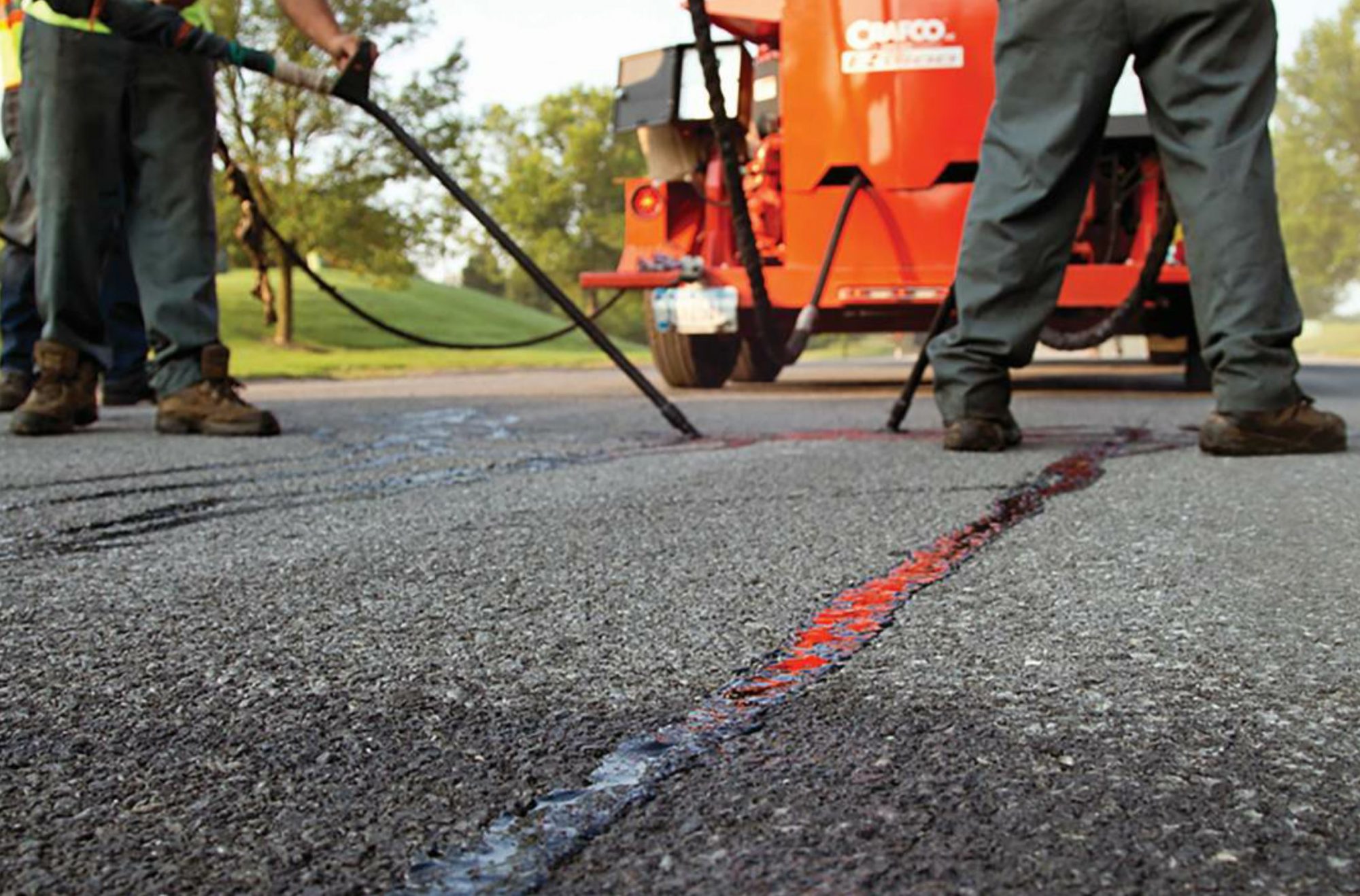In a climate like Louisville, Kentucky, identifying cracked pavements and sealing them almost immediately is one of the most effective ways to maintain pavements and saving on costs. Repairing and preventing these cracks from resurfacing again needs to be done immediately, with caution; otherwise, without crack sealing the potholes continue expanding.
Crack sealing is a process that involves placing an adhesive sealant into cracks on the pavement surface, preventing the penetration of moisture and non-compressible materials into the pavement. The process will be successful with the availability of hot air required to warm the pavement and temperatures below 40 degrees. In Louisville, KY crack sealing lasts up to three decades, and this is made possible by the regular asphalt crack filling and seal coating. The pavement sealing process involves two major steps:
 Preparation of the surface for crack sealing
Preparation of the surface for crack sealing
Preparing the surface is paramount to the successful adhesion of the sealant. Some surfaces could force you to route cracks, while others don’t require routing. Routing a surface before beginning the work provides cleaner edges for material adhesion, enhances the possibility of proper sealant adherence, and makes it long-lasting.
Material preparation – Before sealing the cracks, you need to select sealants based on the pavement condition, the climate, pavement movement, the service life required, and the sealant features. Follow this selection process so that the manufacturer can track the sealant and resolve any issues in case they come up. These factors are further expounded.
- The job type – You need to determine which sealant best works for specific pavements. For instance, a stiffer sealant will work well for parking lots because of the many vehicles and foot traffic, as a flexible sealant could work well for roadways.
- The climate – The winter, spring, or summer seasons will determine the type of sealant you use. Cooler climates need more flexible sealants compared to hotter climate conditions. Avoid using softer sealants in a hot climate as it could lead to tracking.
- The pavement condition – The percentage of the crack density should help you determine which sealant to use. In this case, a crack density less than 20% needs a more flexible sealant.
Despite many available crack sealing processes, the best practices for seal application include flush fill, reservoir, and combination. It doesn’t matter which method you use; what matters is to fill the crack from the bottom up to have a successful complete seal and use the right wand tip for the process.
The cure time for the depends on:
- The sealant used.
- Weather
- Volume traffic on the road.
Remember, in the process, not to use too much sealant or leave behind drips and puddles. Avoid these by using a drip stopper that also limits excess sealant application. Do not turn a freshly repaired crack-sealed surface into traffic soon. Commonwealth Paving is here to guide you through the process.







